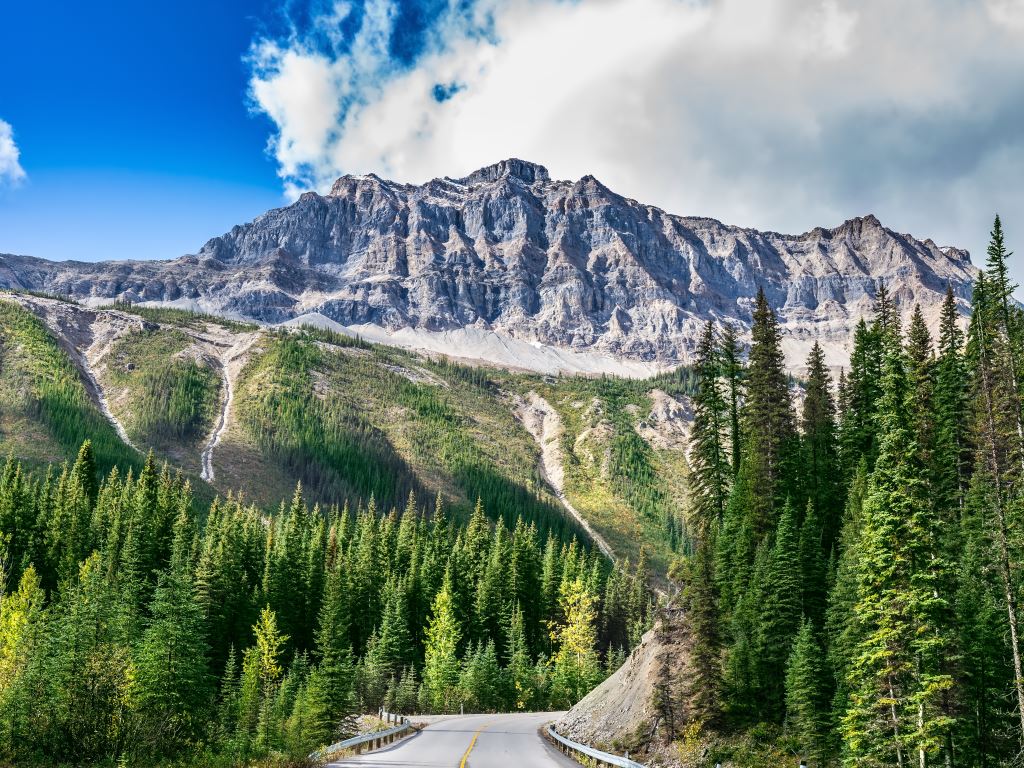Winters here are very harsh so if you are visiting during this time, arrange for the hire of snow chains and winter tyres at the very least. Always take a mobile phone if you can and have the number of the local emergency services available.
Be mindful of road signs warning of wildlife; large animals such as moose and elk can stray across the road and will cause substantial damage if you hit one.
Read our Canada travel guide. You may also like to view information about destinations in Canada.
Tips for driving in Canada
Which side of the road do they drive on?
Drive on the right, overtake on the left. On roundabouts, drivers coming from the left have right of way.
Seat belts in Canada
If fitted, seat belts must be worn at all times by all occupants of the vehicle. Failure to do so can result in a fine of up to $500.
Driving with children
Changes to the law in 2012 mean child safety seats or booster seats must be used by all children under 36kg, 145 centimetres or younger than 8. These seats must match the standards of the Canadian Motor Vehicle Safety Standards organisation.
Blood alcohol limit
It’s a criminal offence to drive with 80mg of alcohol in 100ml of blood. Those with 50mg of alcohol in 100ml of blood are dealt with under provincial and territorial traffic acts. Stay on the safe side as a foreigner exceeding this limit could be deported and a record of drink driving may make it difficult to enter Canada.
Can I use a mobile?
It’s illegal to use a mobile unless you have a hands-free kit. Again, laws are strict so try not to use it at all unless you’re parked and the engine switched off.
Do I need winter tyres?
Despite the bitter winters, only Quebec requires you to use winter tyres by law. They must be equipped between December 15th and March 15th.
The regulations for other provinces are as follows:
British Colombia: Snow chains or winter tyres are required by law only in certain mountainous areas. Spiked tyres, up to 3.5mm, are permitted between October 1st and April 30th
Alberta, Saskatchewan & the Northern Territories: Spiked tyres are OK at any time of year.
Ontario & Manitoba: Spiked tyres are permitted from October 1st to April 30th.
Nova Scotia & New Brunswick: Spiked tyres are permitted from mid-October to the end of April (May 1st in New Brunswick).
Newfoundland & Labrador: Spiked tyres are permitted from November 1st to the end of May.
Prince Edward Island: Spiked tyres are permitted from October 1st to May 31st.
Red light confusion
It is illegal to turn right at a red light on the island of Montreal but legal everywhere else (unless stated otherwise).
Parking
Always park on the right in the direction of the traffic flow.
Stopped by the police
If you are pulled over by the police stay still and do not exit your vehicle. Turn the ignition off and sit patiently with your hands visible.
Horns and headlights
Always use dipped headlights during low visibility. Some provinces require drivers to keep their headlights on during the day – always check when collecting the vehicle.
School buses
If a school bus stops and flashes red lights, traffic in both directions must stop.
What should I do if I breakdown?
If you breakdown in Canada, you must put on a reflective jacket and place the reflective triangle 30m behind the vehicle to warn other drivers. Call the supplier who will be able to advise you.
Trap a piece of white cloth or paper somewhere obvious on the vehicle. This alerts drivers that your vehicle is in trouble and they should pass you. It is recommended you contact ourselves at the same time to ensure you follow the correct procedure.
What should I do if I have an accident?
If you’re in an accident, you MUST notify the Police and get an accident report for insurance purposes. Failure to do so may result in you footing the whole bill. It is recommended that you contact the supplier and ourselves at the same time to ensure you follow the correct procedure.
Driving distances in Canada
Calgary to Vancouver – 990km (10hrs 26mins)
Calgary to Edmonton – 288km (2hrs 47mins)
Calgary to Toronto – 3,405km (33hrs)
Vancouver to Ottawa – 4,364km (44hrs)
Vancouver to Montreal – 4,560km (45hrs)
Montreal to Calgary – 3,611km (37hrs)
Edmonton to Ottawa – 3,499km (36hrs)
Toronto to Montreal – 541km (5hrs 19mins)
Book now



